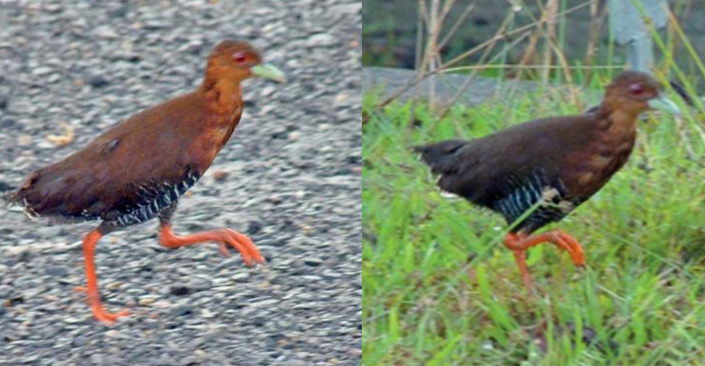Great Nicobar, July 27, 2012
A team of scientists of Zoological Survey of India (ZSI) here are presently inventorizing the fauna communities of Great Nicobar Biosphere Reserve (GNBR) under the man and biosphere programme of UNESCO with the sponsorship of Ministry of Environment and Forests, GoI. The GNBR is one the 17 biosphere reserves designed in India. The results of the recent survey conducted by ZSI in GNBR discovered a new species of bird Rallina (Water Rail or Crake). For the convenience of the future study, this species has been named as `Great Nicobar Crake’.
Scientists said that, the species under Rallina is a very rare and data deficient group of birds, according to IUCN status. So far 8 species under the genus Rallina have been reported from Australian and Asian continents. Among them 3 species are found in India including A & N Islands of which Andaman Crake Rallina canningi is endemic to Andaman.
The newly discovered Rallina is fast running bird found near water bodies. The bill is rather thick and short, neck moderately long, legs rather heavy with moderate length toes and short claws, and the tail fairly short. The plumage is generally rich rufescent, the back browner, the wing-coverts narrowly black and white barred, the under parts below breast with broad black and narrow white bands, and the thighs very narrowly barred, appearing blackish. The iris is bright red, fleshy orange-red eye-ring ; bill entirely very pale green except for slightly reddish-tinged tip, tarsi bright orange-red with duskier claws.
No other species of Rallina has a combination of pale green bill, broadly black banded under parts, and heavy orange-red legs.
Presently discovered bird not only enhances the total number of bird species reported from Andaman and Nicobar Islands but also at global level. This discovery has been published in the journal Birding ASIA Vol.17 (2012): 44-46 (authored by S. Rajesh Kumar, C. Raghunathan and P.C. Rasmusssen), according to a communication received from ZSI. The paper is attached for download.


 CI is a non-profit, non-commercial portal that aims to facilitate wildlife and nature conservation by providing reliable information and the tools needed to campaign effectively.
CI is a non-profit, non-commercial portal that aims to facilitate wildlife and nature conservation by providing reliable information and the tools needed to campaign effectively.